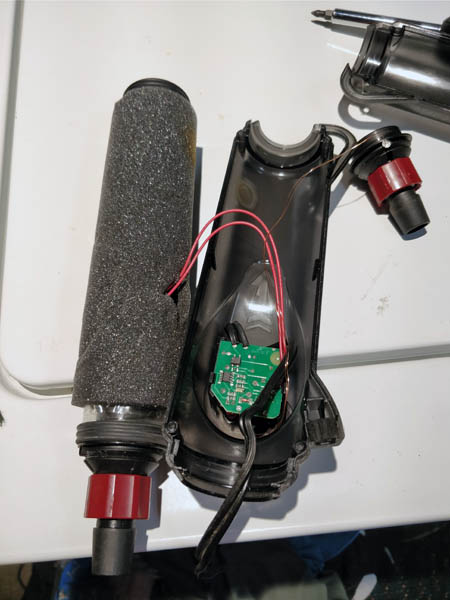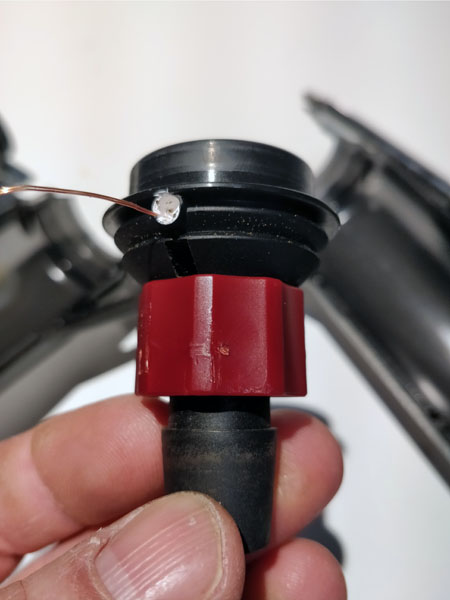Hacking the Hydor Inline Heater
a Heater Nerd(tm) Special Report - 22 April 2018
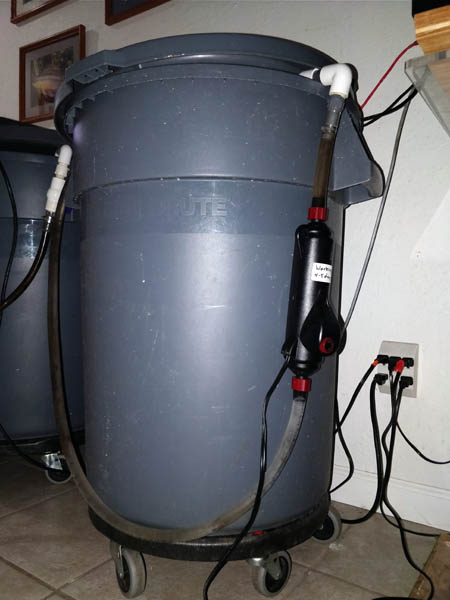 Here at Heater Nerd Labs, we love the
Hydor Inline models (ETH-200 and ETH-300). They have an
electronic thermostat that keeps the tank rock-solid,
temperature only fluctuating +/- 0.1 degree F. They're
external, sitting on the return of the canister filter, so they
don't take up space in the tank.
Here at Heater Nerd Labs, we love the
Hydor Inline models (ETH-200 and ETH-300). They have an
electronic thermostat that keeps the tank rock-solid,
temperature only fluctuating +/- 0.1 degree F. They're
external, sitting on the return of the canister filter, so they
don't take up space in the tank.
I've only experienced two problems with them. The first is that if there is a lot of forced air in the room, it will affect the thermostat adversely. For instance, one time I had a small water spill in the fishroom and
ran a fan across the floor. The heater was in the path of the air, and it caused the tank to warm up by a degree or so.
The second problem is that even so many years having a nice
steady job, I cannot shake my school days: I am
freaking cheap with aquarium hardware. I buy stuff used
at Aquarium Society Auctions. And
if there's any place you can find the best and the worst in used
gear, it's an auction. I think I've bought four Hydor inline
heaters at auctions, and two of them had trouble of one kind or
another. In addition, a friend once gifted
me four of
these, and every one of them was broken in a different way: one
refused to engage the heating element, one was stuck on, one even
had a big crack in the glass. My suspicion on all of these was
that they were all used improperly at some point.
Anyhow... another ETH-300 came up at a recent auction as part
of a box of stuff
and I couldn't resist. And in testing
(see above shot of the fancy testing lab!), this one fell into
the not working camp. Its thermostat could not raise the
water temperature past about 70 degrees. Bummer. But
opportunity! Since it had problems, I had no issues with taking it apart!
There are four screws holding the two halves of the plastic
outer case together. Once removed, the case pops in two, and
inside is a glass tube (with the heating material itself wrapped
around it) encased in foam, the two plastic ends with a rubber
gasket sealing each to the glass tube, some electronics with some
red wires running to the heating elements, and some small gold-ish wires
running to a thermocouple in one of the ends.
It is worth noting that the thermocouple is sitting on the
outflow end, normally sitting at the top of the heater. I thought
the thermocouple was glued in, but it's just sitting in a hole
filled with silicone grease, it pops in and out easily. The probe
is never in direct thermal contact with the water or the glass,
always separated by a little bit of plastic. This explains why
the tank temperature can be influenced by the presence of a fan in
the room. And being at the top of the tube, I can follow that if
the heater were left plugged in while the filter is turned off,
one would expect the heat to rise up the water column, causing a
quick thermal shut-off. However, if the water were to be drained
out of the return line, I could imagine potential catastrophe.
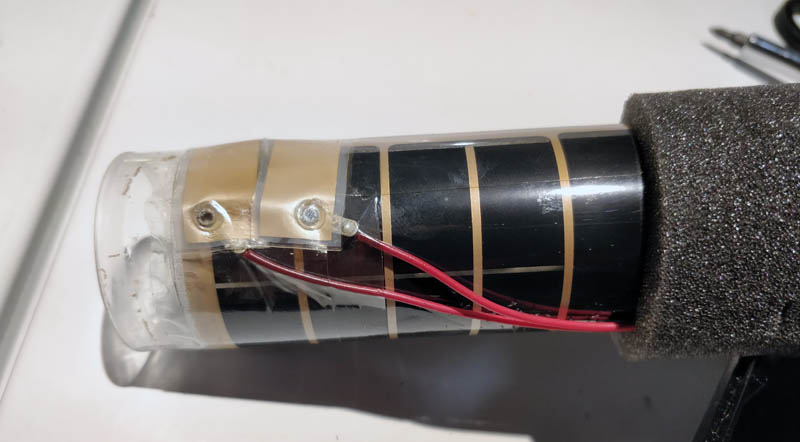
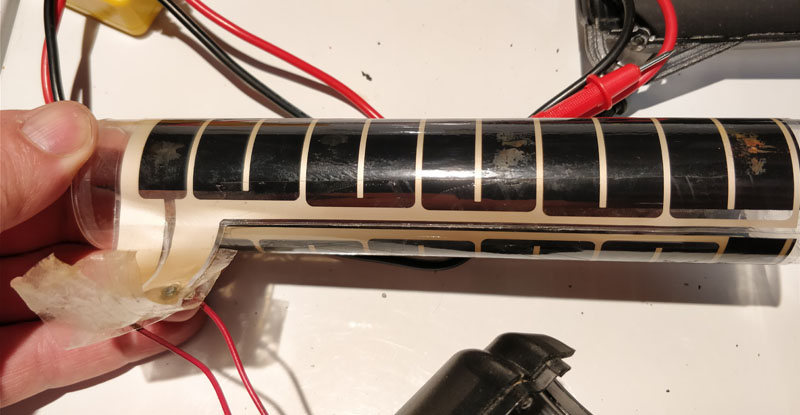
Turning our attention to the heating tube now. The insulating
foam can be partially slid back to reveal the actual business end
of the heater, a thin flexible circuit board wrapped around and
adhering to the outside of the glass tube. There are some gold
traces running up and down the board, with a black resistive layer
underneath. Here's kind of what it looks like unwrapped
:
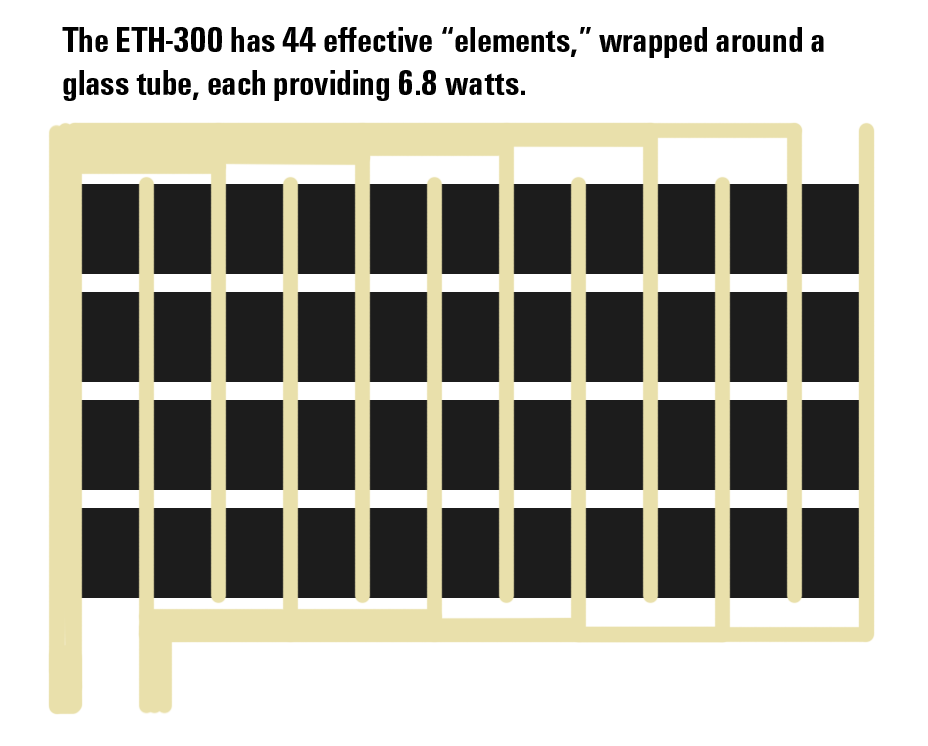
You can see that each of the little black elements is a
resistive heating element, bound on each side by the 120 volt AC
line power. Cool! However, I was rather shocked to find this:
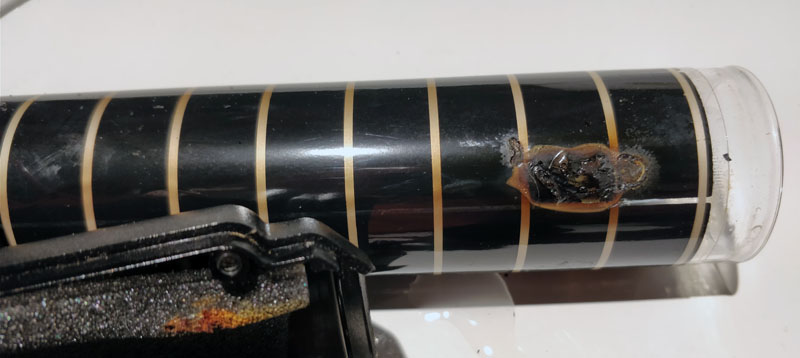
One of the heater elements is clearly damaged. The foam
contacting it was partially melted as well. I'm guessing a former
owner left it on without water in the tube, and exposed to air, it
overheated. I also suspect that the two conductive traces were
damaged on each side, and that even if I got the thermostat
problem solved, I did not actually have a 300 watt heater. Nine
of the 44 elements were probably no longer functioning, their
traces burned off. That would make it a 238-watt heater!
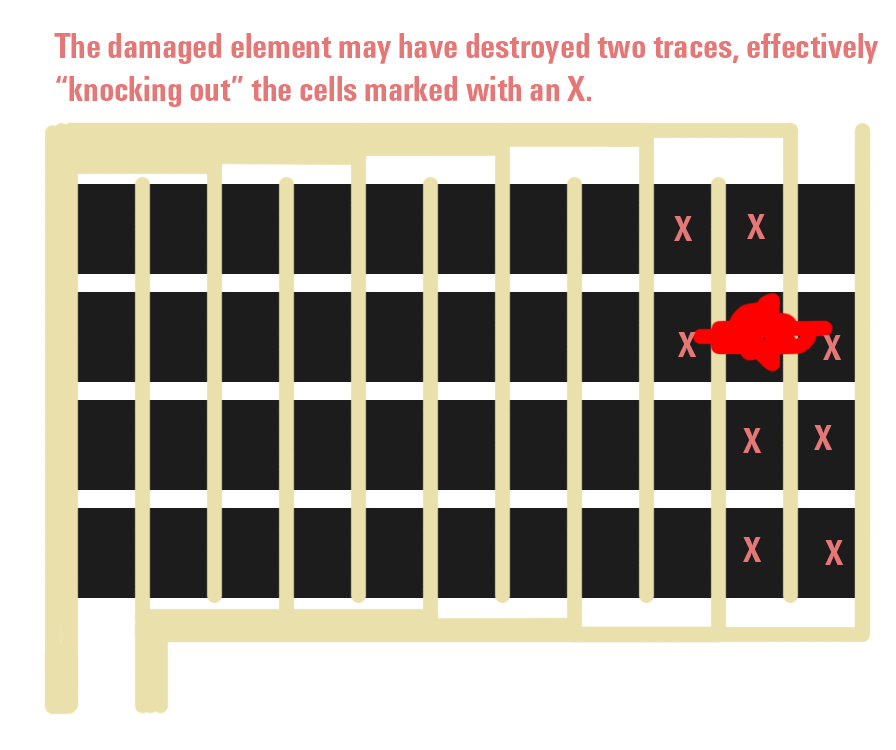
Actually, that's kind of cool. One of my biggest beefs with
the Hydor is they don't make a low-wattage version, only 200 and
300 watt. But there are people who want to run canister systems
on their immaculate aquascaped ADA 60-P (17-gallon) aquarium. We
should be looking at 100 watts or less for an aquarium of
this size. So I decided to deliberately cut some more
traces and reduce the wattage further.
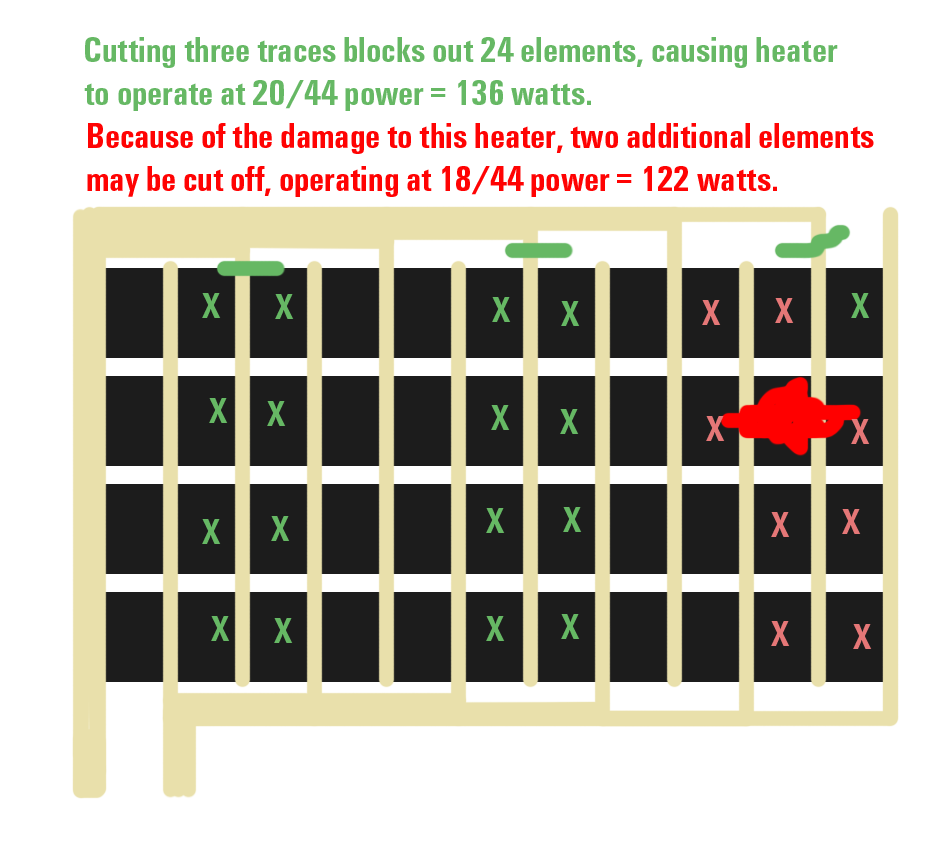
The diagram above nominally knocks out 24 of the 44 elements,
taking the wattage down to a much more manageable 136 watts.
Because of the further damage to the unit I'm playing with, these
mods are giving me a heater of 122 watts. Here is where I cut the
traces, with a razor blade:
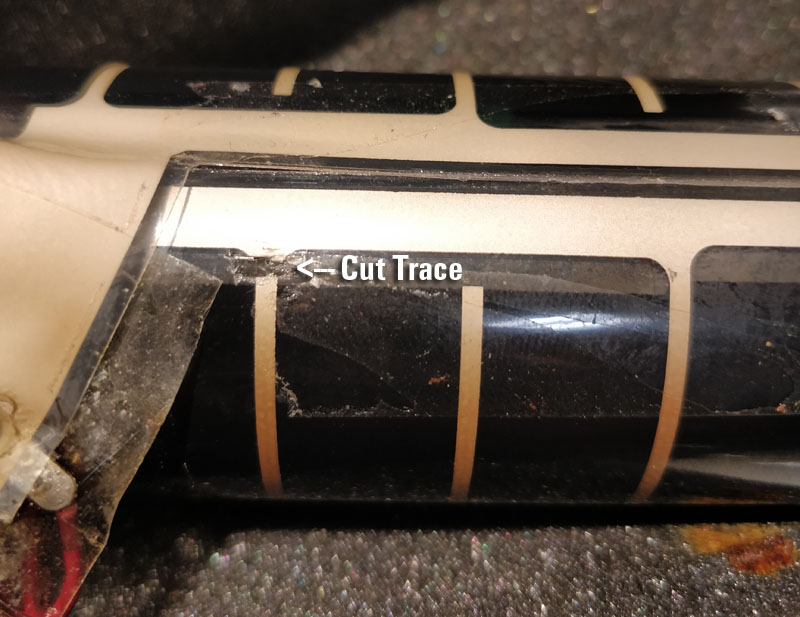
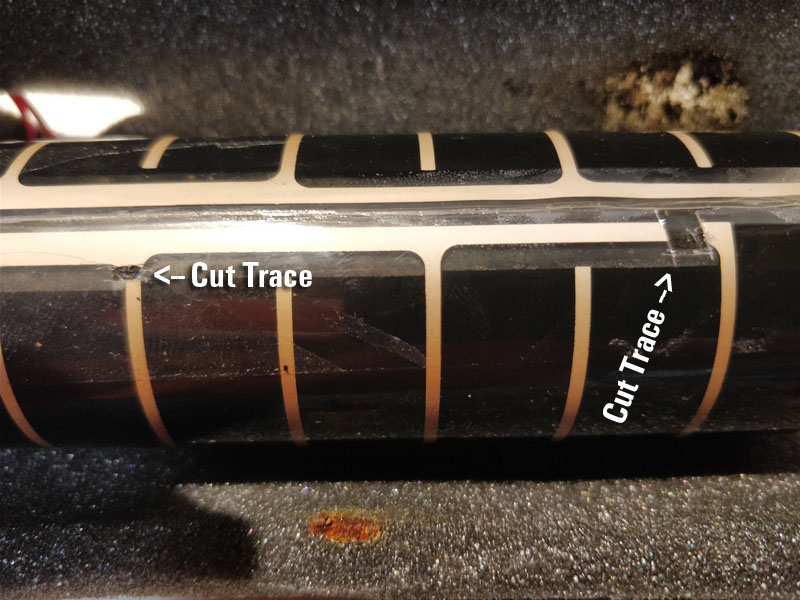
Here's a graph of the temperature in the 32-gallon trash can
that doubles as a test chamber. On the left side, the original
unmodified heater on cold tapwater added to the trash can. On
the right side, the modified heater is turned on and is clearly
heating the water at a slower rate, as would be expected with a
120-watt heater. I declare the mod a success!
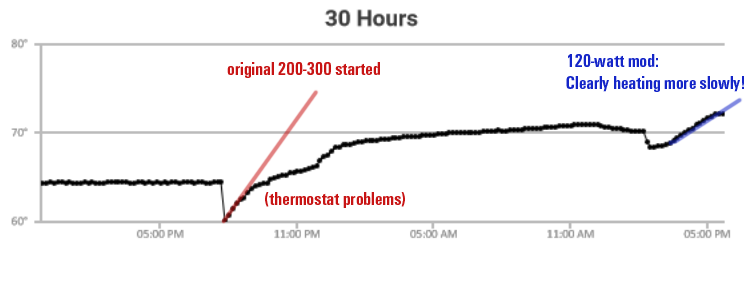
There might be issues with the glass being unevenly heated that would warrant a longer-term study of the thing.
Unfortunately, I'm not going to use this heater in a real tank,
because the thermostat (even with reseating) cuts out at 72
degrees. But after playing with something I was going to toss in the trash, I feel comfortable enough trying the hack on a
good heater, should I ever set up an ADA 60-P with a canister filter!
Hose Adapting
Might as well mention this here... Even though the 200 watt
model is available with smaller barb fittings, all the units
I've managed to buy have had the larger 5/8" (16mm) barbs.
Those work great with Filstar or Fluval canisters, but not so much with Eheims, which take 1/2" (12mm). Found some reducing barbs on EBay (shipping more than the product), and they work just great:

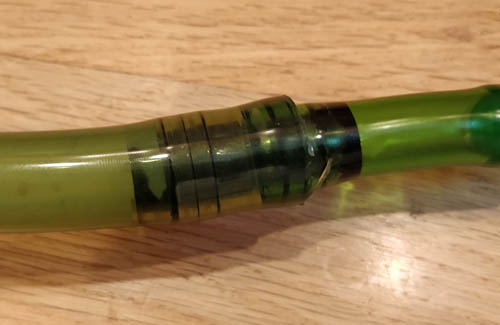
 Here at Heater Nerd Labs, we love the
Hydor Inline models (ETH-200 and ETH-300). They have an
electronic thermostat that keeps the tank rock-solid,
temperature only fluctuating +/- 0.1 degree F. They're
external, sitting on the return of the canister filter, so they
don't take up space in the tank.
Here at Heater Nerd Labs, we love the
Hydor Inline models (ETH-200 and ETH-300). They have an
electronic thermostat that keeps the tank rock-solid,
temperature only fluctuating +/- 0.1 degree F. They're
external, sitting on the return of the canister filter, so they
don't take up space in the tank.